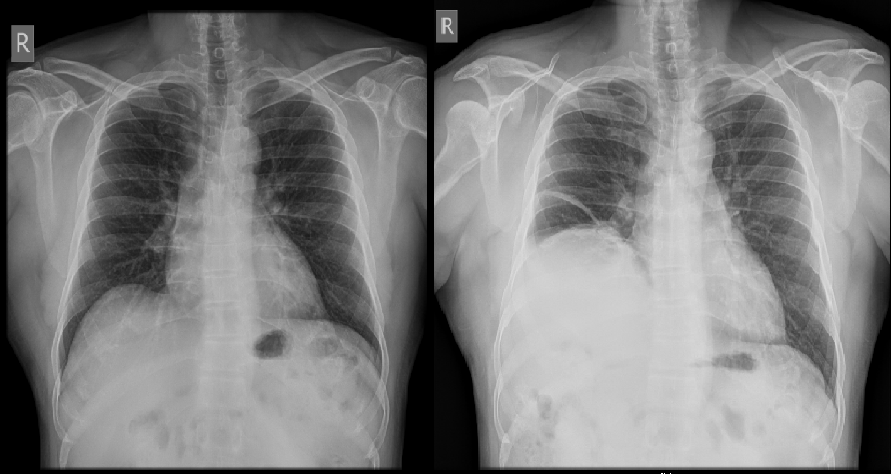
A 42-year-old male patient presented with a non-healing ulcer on the right lateral border of the tongue for 3 months.
A biopsy from the lesion proven to be well-differentiated squamous cell carcinoma. After metastatic workup, he underwent wide excision of the lesion with ipsilateral neck dissection.
On post-op follow up, the patient presented with complaints of exertional dyspnea (breathing difficulty). A chest X-ray was done for him.
His preoperative and postoperative X-rays are shown above. From the given X-ray what’s the probable cause of his breathlessness?
Explanation
One of the complications of neck dissection to control regional metastatic disease in cancer of the head and neck is phrenic nerve paralysis.
Most of the phrenic nerve paresis/paralysis are transient or found to have no clinical significance. Symptoms can be respiratory, cardiac or gastrointestinal.
The resulting elevation of the ipsilateral hemidiaphragm is diagnosed on postoperative chest radiography and may be confirmed by ultrasound or fluoroscopy.
The prevalence rate of phrenic nerve injury in neck dissection varies from 9-14%.
References
- Dugena O, Islam S, Hayter J. The rate of phrenic nerve injury following neck dissection for head and neck cancer and its impact on length of hospital stay. International Journal of Oral and Maxillofacial Surgery. 2017 Mar 1;46:283.
- De Jong AA, Manni JJ. Phrenic nerve paralysis following neck dissection. European archives of oto-rhino-laryngology. 1991 Feb 1;248(3):132-4.
